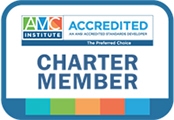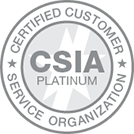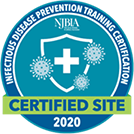I serve on the boards of several voluntary organizations representing a varied array of professions and causes. One of the topics often discussed when any of these groups meet is the need for more volunteers to step up and move the organization forward in a new direction.
For a professional association, such as the many we manage here at AH, while the staff is responsible for implementing the strategic goals of the Board, these are volunteer-run organizations whose governance, direction, and, ultimately, success, is dependent upon engagement of the members. But admittedly, it can be difficult to feel invested in an organization — even if you pay dues — if you’re not sure what’s going on. So to address this need for growing more grassroots support, one of the organizations on whose board I serve recently developed a revised leadership structure.

Starting this year there will be three new steering committees reporting to the board — membership, marketing, and finance — under which all activities the organization undertakes will be coordinated. The steering committees will be led by a group of “high-level stakeholders,” in this case the board members who are responsible for providing guidance on the overall strategic direction for the organization.
The steering committees will invite strategic input from the membership by creating task forces — smaller groups of members/volunteers joined temporarily to accomplish some task or take part in some organized, collective action, with a defined mission, and a defined timeline. And that is the key to this new structure. Understanding that volunteers have very little extra time to give to the association, the board is moving toward this new model to get more members involved in setting the future course for the organization.
Each taskforce has a board-approved plan that is tied directly to the fiscal year budget and the primary strategies of the association. This is the “roadmap” for each task force. The steering committees will keep everyone focused and aware of all the other related task groups’ activities to encourage a branded approach and reduce duplication of effort.
The primary goal of this is to provide a streamlined approach to leadership; to recruit new bodies to get involved at the task group level as a sort of testing ground to find future board members; to implement a more strategic approach to the way the organization operates; and to show members that the time commitment to the organization can be very limited especially within the task groups since they will have a specific focus and a specific timeline for accomplishing their mission.
The current list of taskforces includes a group looking at how to improve the educational content the association offers — one assigned with developing programming and new ideas for the annual conference; a group investigating how to grow the organization’s certification program; one looking into the development of an educational foundation; and one dedicated to the aims of the associate members. Others that are in the works include a group looking at the organization’s website; one looking into ways to develop new content for their communications activities; and investment and audit task group to anticipate the future financial needs of the organization.

If all goes as planned, one activity slated for the taskforces is Member Outreach Day, which will be held during the annual conference next winter. The purpose of this meeting is to outline the goals and initiatives of the organization to all of its members, welcome new volunteers into the task forces, and provide another networking opportunity. This will also be a very visible way for the three steering committee chairs to clarify their position to the membership and act as leaders and provide resources in keeping the task forces on track, as well as identifying future leaders.
The hope is that by inviting more members to get involved with the direction of the association they will see a deeper commitment to the organization from more of the association’s existing members, but also growth in membership in general.
The organization is in a better position than it has ever been in many ways. The membership is strong, the association is strong. It only makes sense that the organization should seek to appeal to a broader slice of the profession
I’d love to hear from anybody out there who may have had similar experiences with this type of grassroots leadership development effort so this association can possibly avoid some of the more common pitfalls, so please share your thoughts and ideas!




